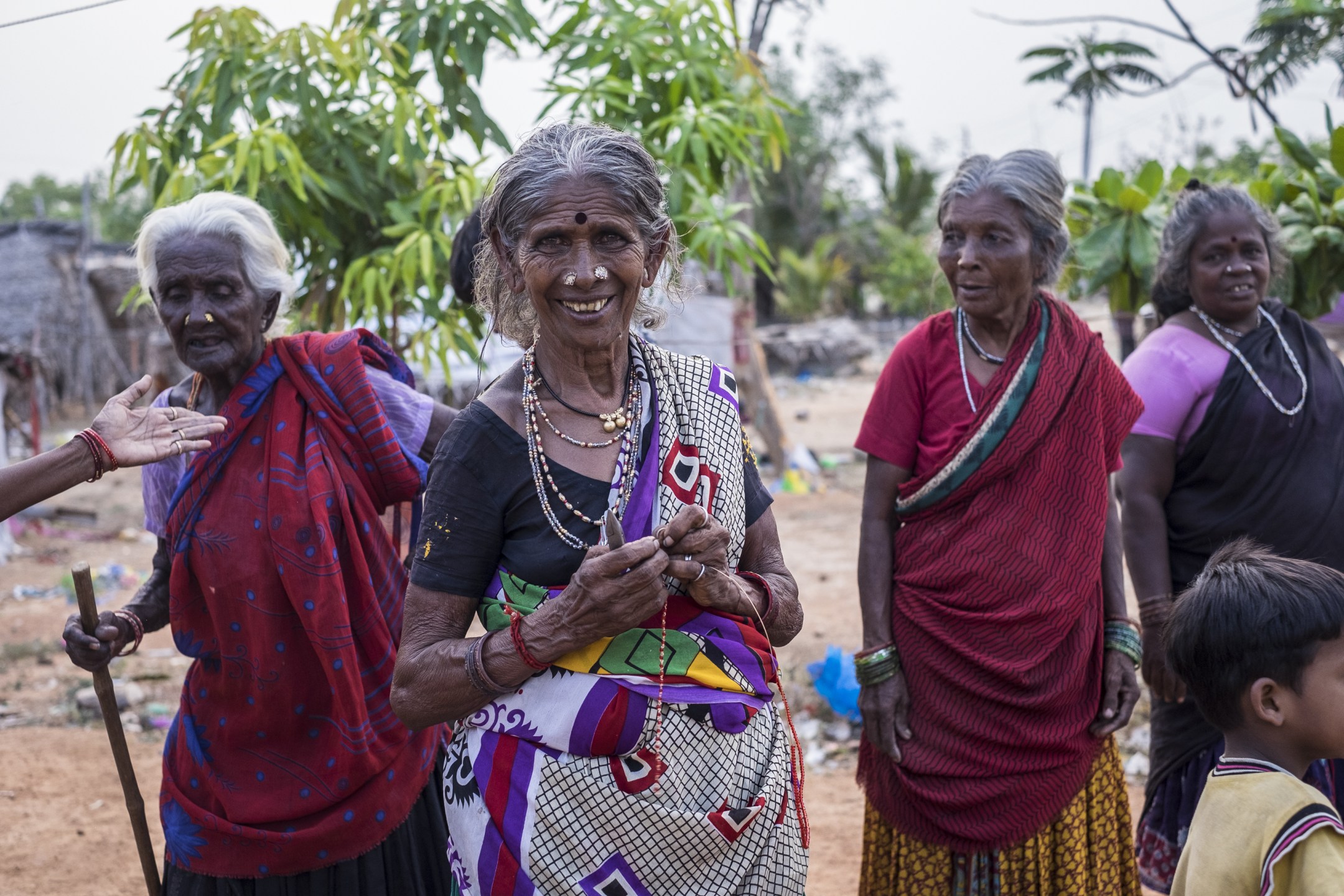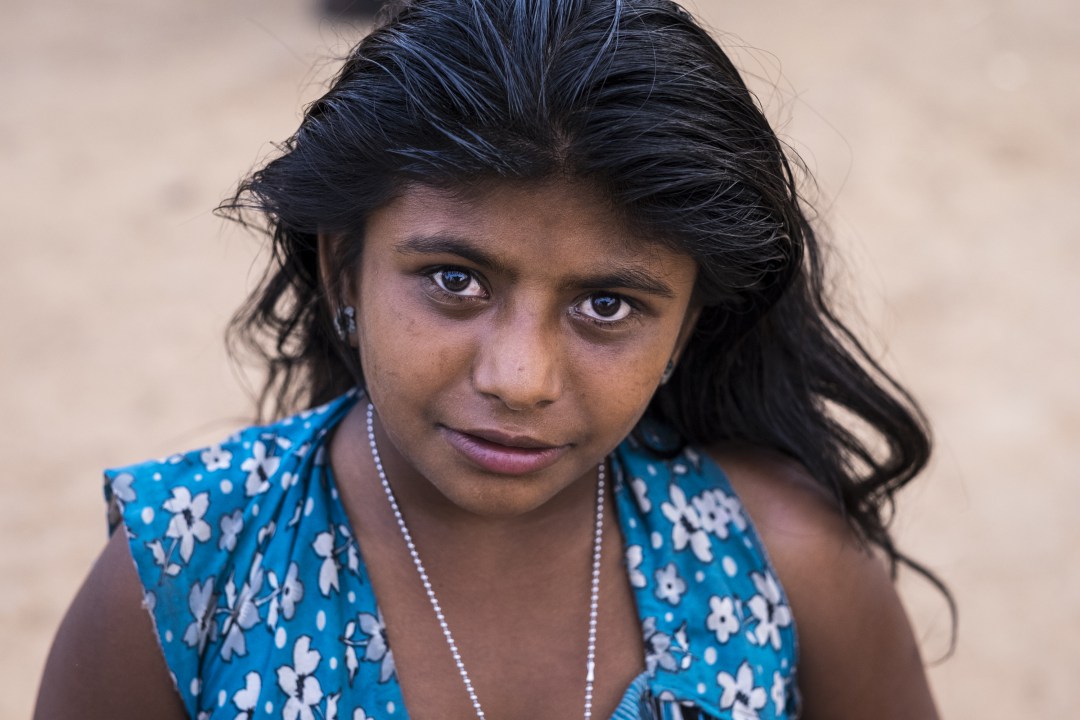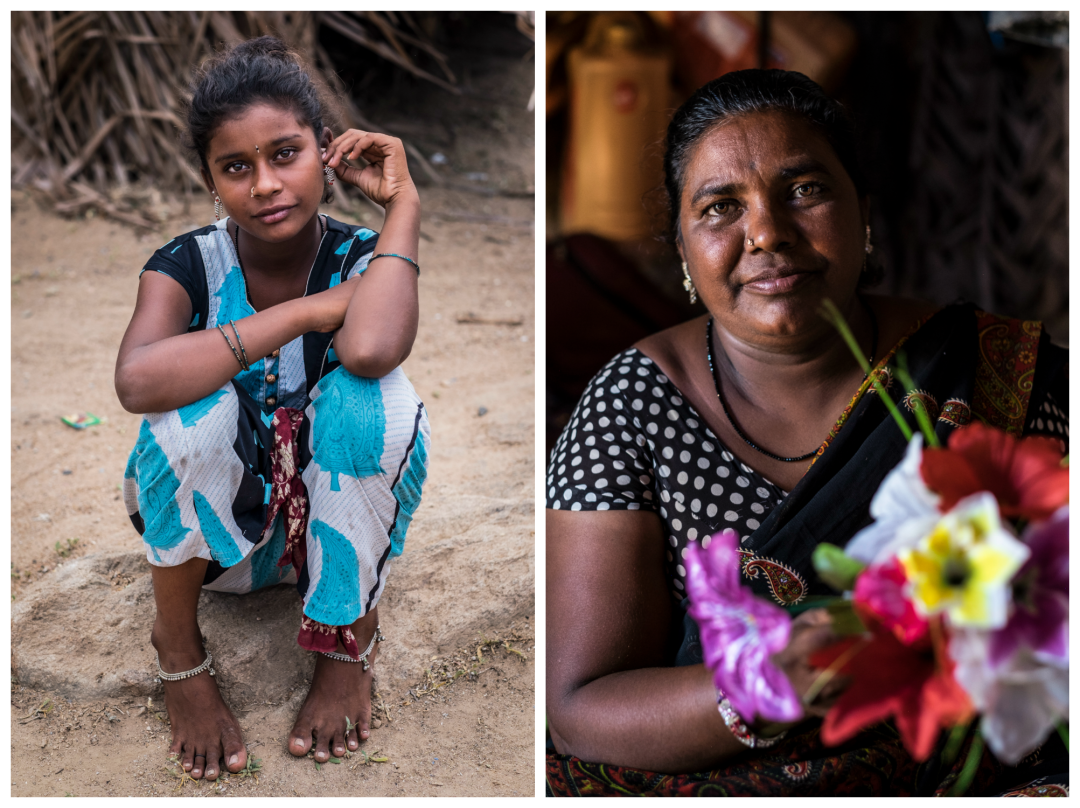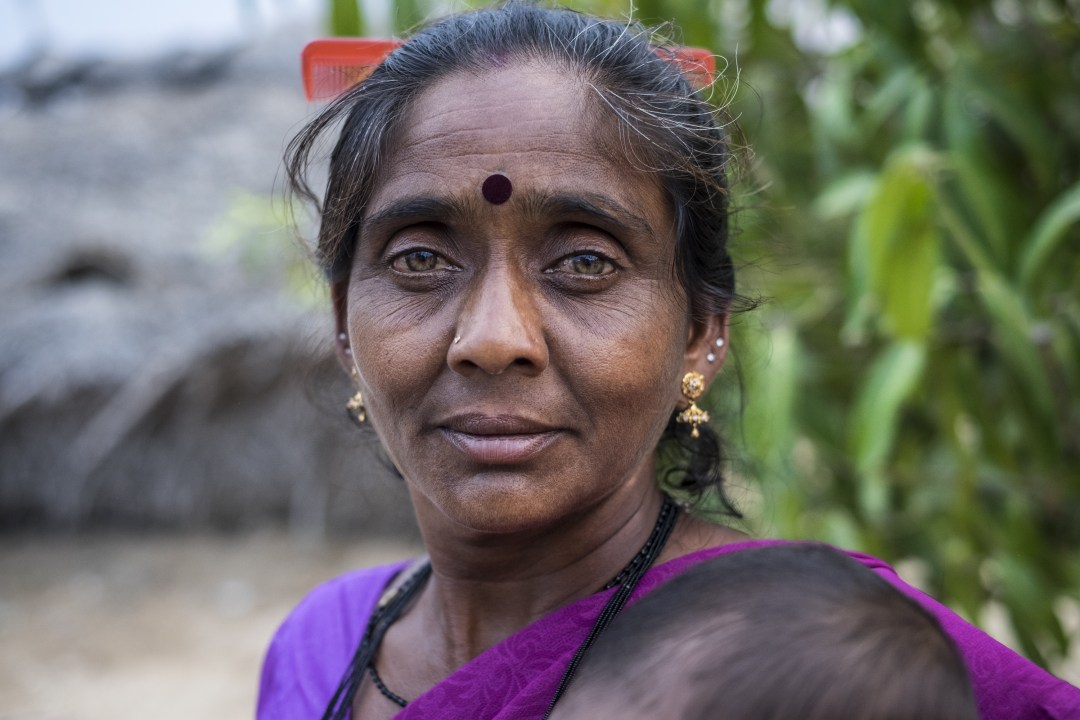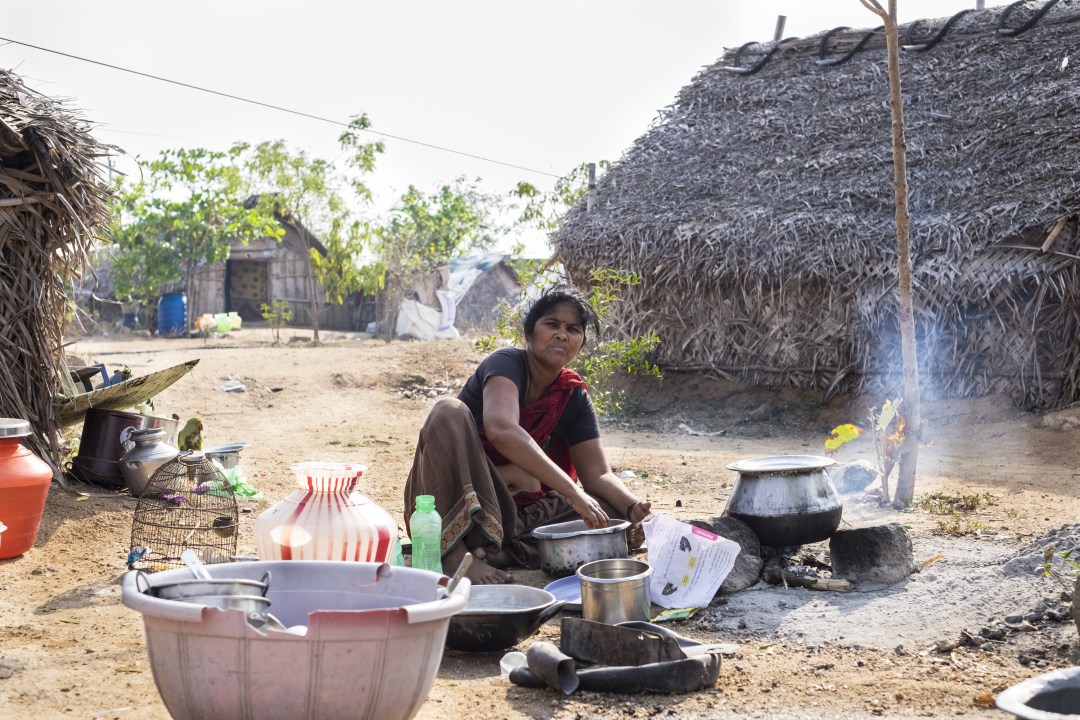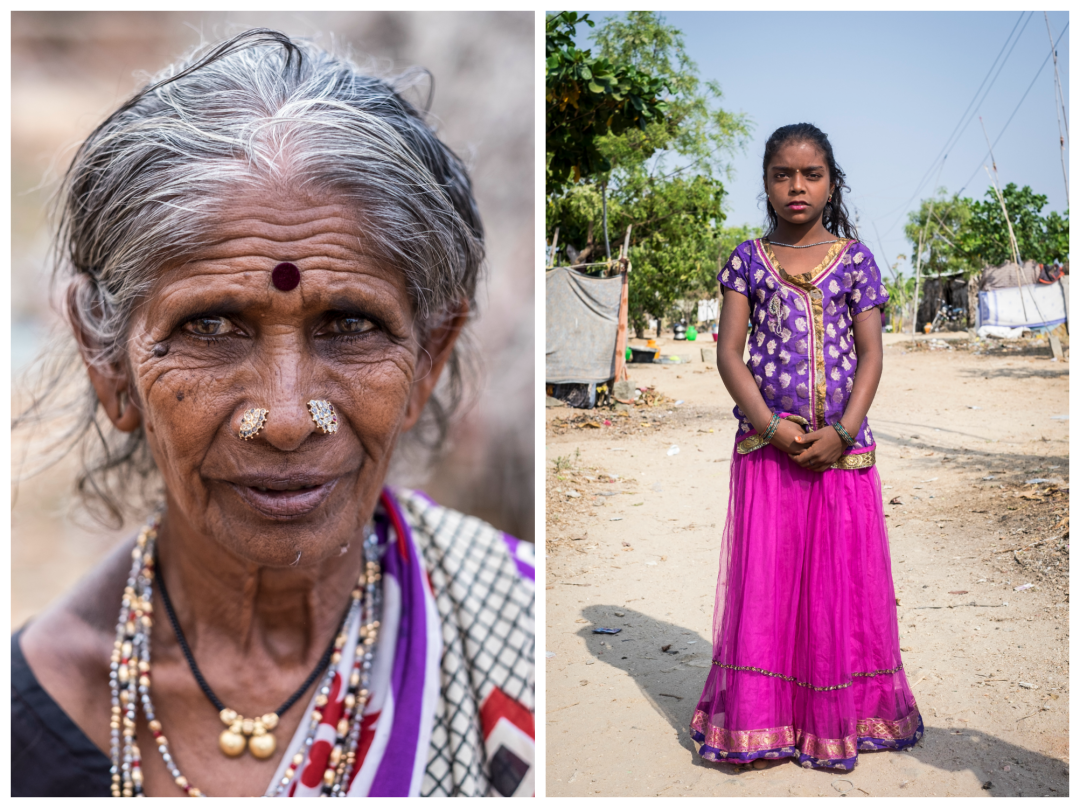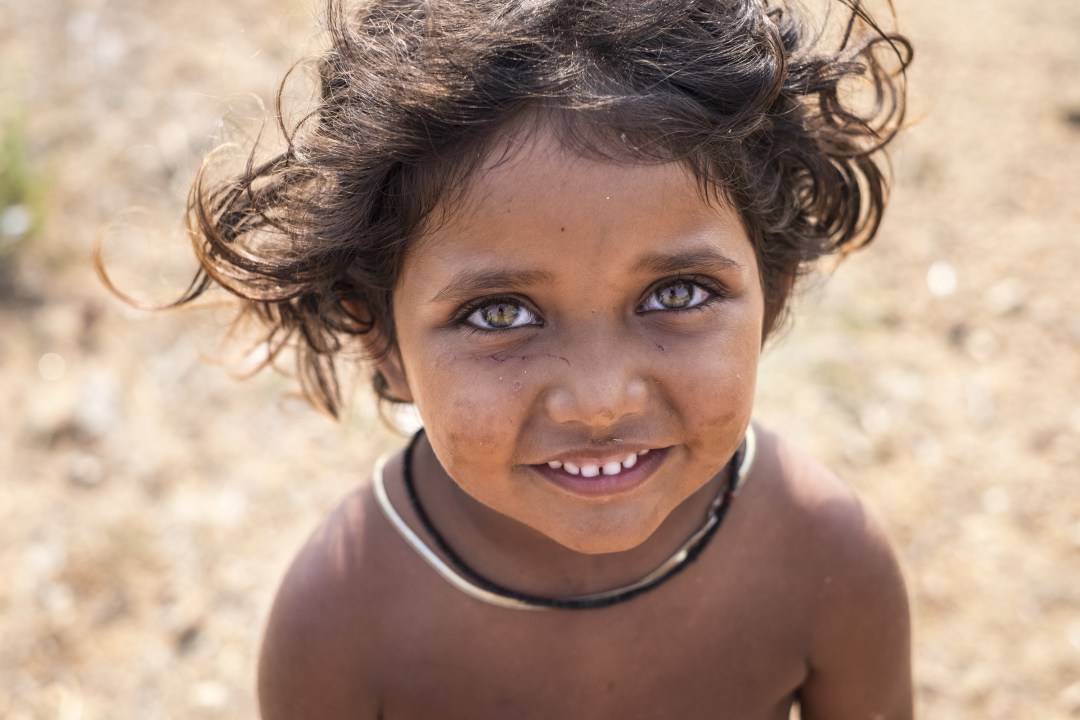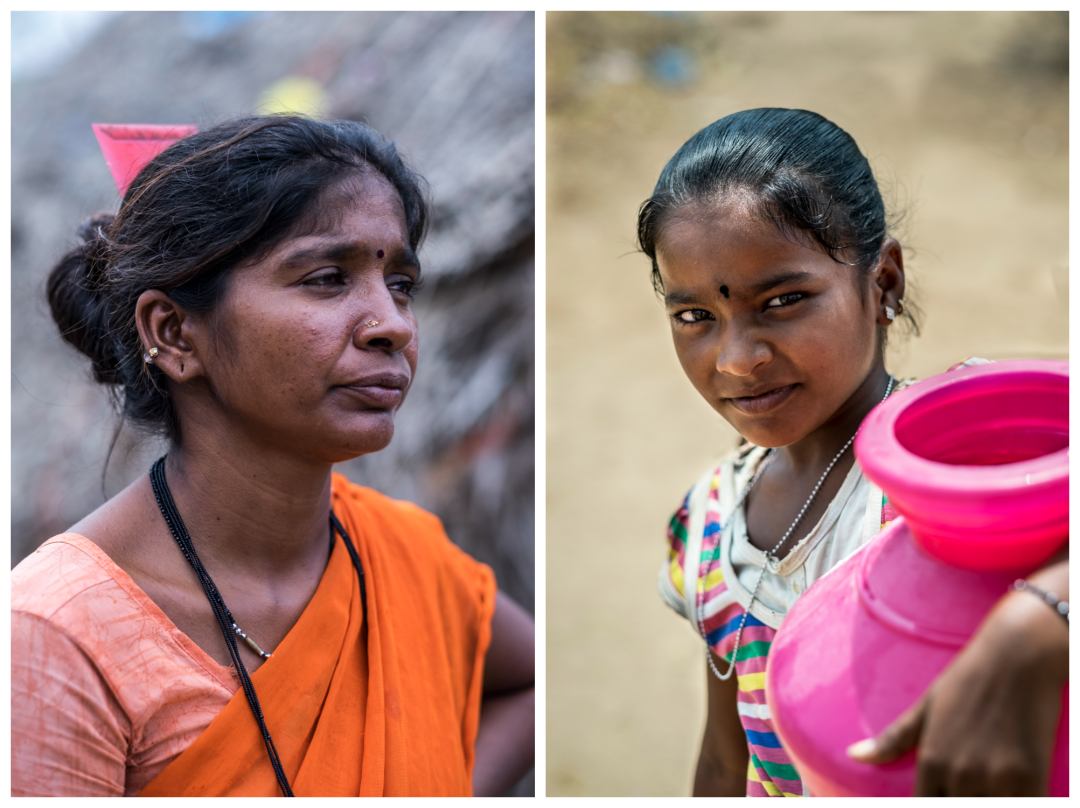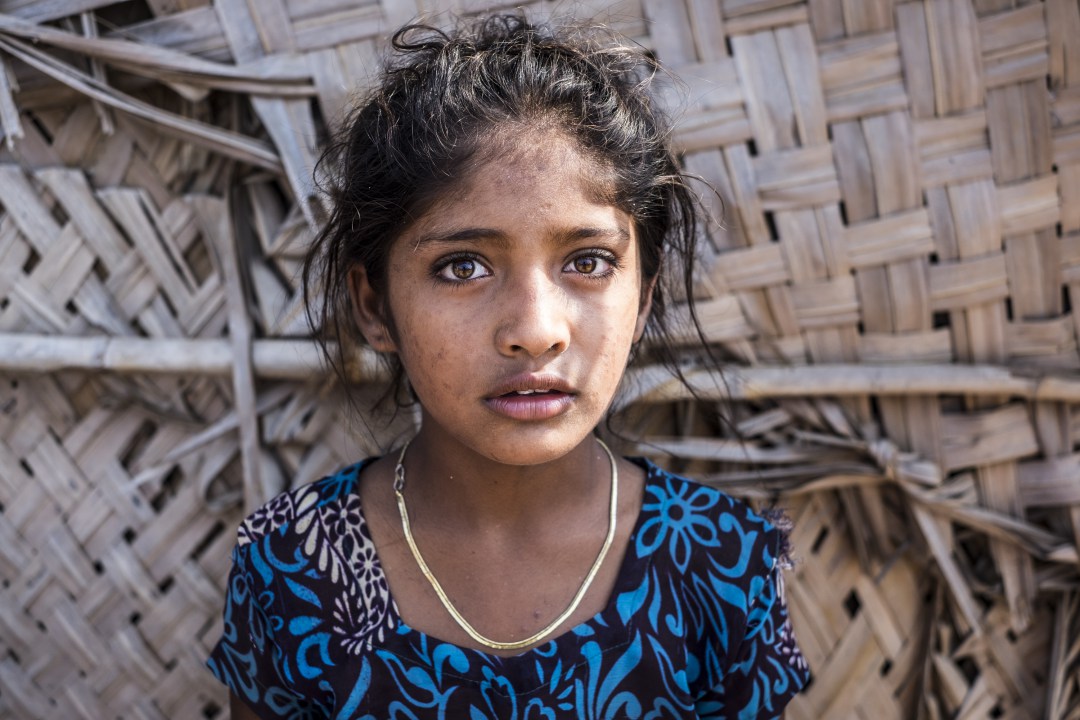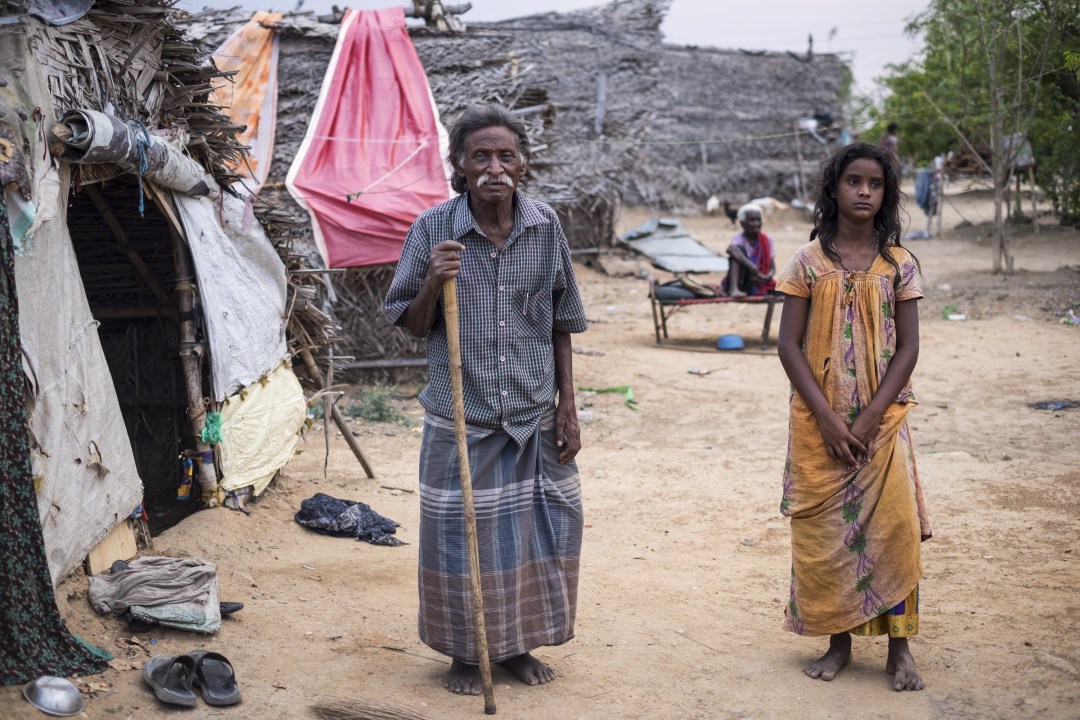I had heard of the Narikuravar, and even seen their camps sprawled out across pavements in the city, lending significance to their reputation as Gypsies. I was told their living conditions were appalling and to be aware of begging. As my local friend and I pulled up to one such settlement on the outskirts of Tiruvanamalai at 7am, plumes of smoke were already rising from earthen hearths and curious children began to appear from all directions. Soon, tiny hands were holding mine and dragging me down the sweltering lanes from one thatched hut to another.
Though I was in the heartland of conservative Tamil Nadu, these pre-pubescent daughters often wore lipstick, eye-shadow, and fake diamonds. The famed beauty of Gypsies is indeed jaw-dropping, and a touch out of place for the conditions in which they subsist. Girls seem to understand their charm and perhaps for a community whose females barely ever make it to middle school, it is not surprising that they flaunt the features which will attract a male suitor.
Although it is officially illegal in India, the Narikuravar still practice child marriage. Half of the female population are illiterate and spend their days making beaded ornaments or plastic flowers to be sold in markets by their husbands. They are incredible dancers. Their gaze can pierce your soul. And by the time a young woman is in her twenties, she has an abundance of little ones to look after.
Sadly, this is the same old story for so many marginalized and stigmatized communities.
The Narikuravar are considered ‘Untouchables’, India’s lowest caste, and this label has pitted them against a modernizing world in which they can stake no claim.
Education is undoubtedly the means to break the insidious stranglehold of superstition and backward thinking that too soon turns starry-eyed girls into weathered mothers. However, young women of the Narikuravar are equally oppressed by the archaic beliefs of elders, who think that education will corrupt a girl by empowering her to question her circumstances. After all, who will stand in the hot sun each day to fill jugs with water?
Written on the faces of these young ladies is a sort of ‘who cares’ expression, but when pressed about going to school, their rebellious attitudes prove to be as flimsy as the thatched huts they live in. It seems that their resistance to development is actually resignation to an unavoidable fate. For an Untouchable girl the future is a predictable one. By mid-life, the lines etched across a woman’s face tells the story that lips do not have to.
Yamuna Flaherty is a photographer and writer interested in tribal communities and is currently working on a project to dig a well for this Narikuravar village. www.youcaring.com/letsbuildawell
Check out Yamuna’s website or follow her on Instagram for more stunning photography and stories.
THIS ARTICLE WAS ORIGINALLY PUBLISHED ON ROAM MAGAZINE.
YAMINA FLAHERTY
Yamuna Flaherty is a multi-disciplinary storyteller, published author, and explorer who has spent the last 17 years on a global pilgrimage. Her photographic and literary work often explores the intersection between consciousness, culture, and identity. She is a regular traveler to India and has matrilineal roots in Tamil Nadu.

